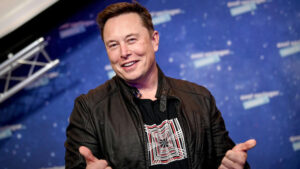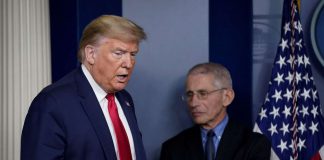JUNE 15, 2023

Elon Musk is not completely satisfied.
Tesla’s billionaire CEO recently got the recognition he’s been waiting for years. That the major American automobile manufacturers recognize that Tesla is now at the center and the leader of the automobile industry.
Ford (F) and General Motors (GM), the two main members of Detroit’s Big Three, thought that they could maintain their leadership, despite Tesla’s exceptional market value, clearly indicating a changing of the guard. But twenty years after the creation of the electric vehicle manufacturer, the two legacy carmakers have finally admitted that the disruptor is now the benchmark when it comes to the car industry.
This recognition came in the form of two unprecedented agreements. Starting in 2024, customers of the two legacy carmakers will be able to recharge the batteries of their electric vehicles using the Tesla supercharger network, which consists of about 17,000 stations across the United States, making it the largest network of charging stations in the country. But GM and Ford customers will only have access to 12,000 superchargers.
Supercharger And EV Connectors
“Superchargers can add up to 200 miles of range in just 15 minutes. Since charging above 80 percent is rarely necessary, stops are typically short and convenient,” Tesla says in its website.
With this in mind, Ford and GM have agreed to adopt Tesla’s charging connector which connects the electric vehicle to the charging station. Owners of the two Michigan giants will only have to purchase an adapter which will cost around $100.
This is a big win for Tesla (TSLA) and Musk, as not only are they finding a new revenue stream, but its EV charging plug is set to become the standard. Currently there are two charging standards in North America. There is Tesla’s North American Charging Standard, or NACS, and the Combined Charging System, or CCS. The latter, which uses a slow-charging connector, is used by all other car manufacturers.
The CCS is also the connector used by the public charging network, which currently has 54,000 locations according to the Energy Department. The problem with the public charging network is that there are very few fast chargers that allow you to recharge your battery very quickly. There is a total of 7,400 public station superchargers using CCS.
Besides Ford and GM, no other carmaker has joined Tesla and Musk. But the billionaire has just taken the lead and invited Toyota to join Tesla’s new coalition. The invitation came on Twitter, after a user mentioned a news article showing that taking a trip in the new all electric SUV from Toyota was a battery-charging nightmare.
“Business Insider drove the new Toyota bZ4X EV from New York to Washington DC, and back,” wrote on Twitter on Jun. 14 Sawyer Merritt, a self-described Tesla investor and fan. “The 9 hour drive involved 3 hours of charging. Even at 37%, the bZ4X refused to pull more than 35 kW charging speed.”
“A [Tesla] Model Y would need to charge a total of maybe ~30 mins the entire trip,” he added, with a link to the article.
Musk then took the opportunity to encourage Toyota to do what Ford and GM did.
“They should join the NACS coalition!” the Techno King, as he’s known at Tesla, commented.
Will Toyota Say Yes?
Toyota (TM) didn’t immediately respond to a request for comment.
Musk’s offer comes as the Japanese carmaker has just announced its acceleration in the development of electric vehicles with a battery whose range would be 600 miles (1,000 km). That’s a lot more than what Tesla currently offers.
If the Japanese group decides to respond positively to the offer of the boss of Tesla, this should encourage other carmakers like Kia (KIMTF) , Hyundai and Stellantis (STLA) to do the same, so as not to find themselves at a competitive disadvantage.
Volkswagen (VWAGY) is, for the moment, one of the few automakers to have indicated that it remains faithful to the CCS charger. Indeed, the German giant is building its own network, which currently has 840 charging stations. This figure is expected to double by 2026.
The charging network is one of the most important things in the development of electric vehicles. The automaker which offers batteries that can last a long time, i.e. allowing drivers to travel long distances with a single charge, and which has a large network of charging stations, and also allows the battery to be recharged quickly, has the advantage. This is one of the strengths of Tesla, which currently dominates the market.
By opening its network to its rivals, Tesla agrees to dilute its advantage, but at the same time it finds an important source of income and positions itself as the leader, since its connector becomes the standard.
“We built the Supercharger network out of desperation, since no one else was doing it,” Musk said on Jun. 14.
This forced decision now bears huge dividends.
Courtesy/Source: TheStreet

































































































